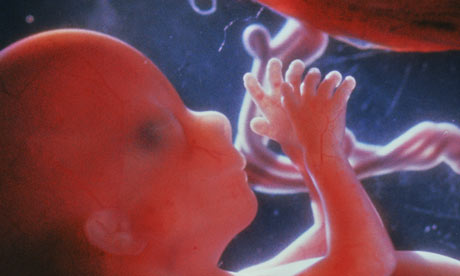One can think of the telomere as the aglet on the end of a shoe lace, the cap on the end of a length of DNA to stop it getting any longer - it's what stops chromosome legs linking up end to end. The region of DNA on either end of a chromosome is actually a length of G-rich DNA with the pattern TTAGGG repeating over and over again for a length of 5-15kb, then finishing off with a long G tail of 50 - 300b. A protein complex, sheltrin, binds to this section of DNA and helps the legth of DNA form a T loop which is a bit like a knot at the end of a shoe lace.

It is generally well known in the scientific community that the length of the telomere is related to the life span of a cell or multicellular organisms - regulating how many times cells can replicate before they stop dividing, go into senescence and eventually die. Generally a human cell will go through 40-60 cycles or thereabouts (the Hayflick limit). The length of telomeres reduces with every-other revolution of the cell cycle and it gets to critical length before the cell stops dividing.
This year's (2009) nobel prize in phyisology/medicine was awarded to Elizabeth H. Blackburn, Carol W. Greider and Jack W. Szostak for discovering how chromosomes are protected by telomeres and the enzyme telomerase. One of their key findings was that telomeres are not shortened with every cell cycle.
It is not known exactly to what level the length of telomeres or the rate of erosion affects people's life expectancy. The general rule is that if you start off with long telomeres and/or telomere shortening is slow, then your life expectancy will be longer. But life expectancy and longevity has multiple factors governing it.
Telomerase is the enzyme that keeps the telomere long. Some species even produce enough to lengthen their telomeres with every-other cycle so they live longer lives but they still die eventually. Telomerase and long telomeres may play a larger role in slowing the ageing process rather than extending life.
Because telomere erosion occurs consistantly during the cell cycle it can be used as a measurement of age of a species where it is difficult to predict the age of an animal. And intraspecies, the telomere lengths and rate of erosion is quite different. Compared to many animals the homo sapien has a really long life considering that human telomeres are only 8–12 kb in length or less at birth and reduce 2 - 4kb in a lifetime. The rate of change of telomere erosion plays a role but looking at the graph below it is not so clear cut if long telomere lengths extend life, especially when compared with our closest living relative, (Pan) the chimpanzee. And also, one wonders about trees - some trees are thousands of years old and still going! (see B.E. Falanary paper below)

The role of telomeres is to maintain the chromosome package. In bacteria mutations are not a big deal but in higher organisms they can cause serious harm and even lead to cancer. The hayflick limit governed by telomere length is seen as a safety mechanism which limits the number of cycles a cell goes through in order to make sure the quality of the DNA does not deteriorate, because with age comes an increased risk of mutation and cancer development.
Recommended papers:
C.M. Vleck et al., 2003, The natural history of telomeres: tools for aging animals and exploring the aging process.
Y. Deng et al., 2008, Telomere dysfunction and tumour suppression: the senescence connection
P.M. Lansdorp, 2009, Telomeres and disease
B.E. Flanary, 2005, Analysis of telomere length and telomerase activity in tree species of various
life-spans, and with age in the bristlecone pine Pinus longaeva
T.J. Vulliami, 2009, Premature Aging
C. Auriche et al., 2007, Budding yeast with human telomeres: A puzzling structure












